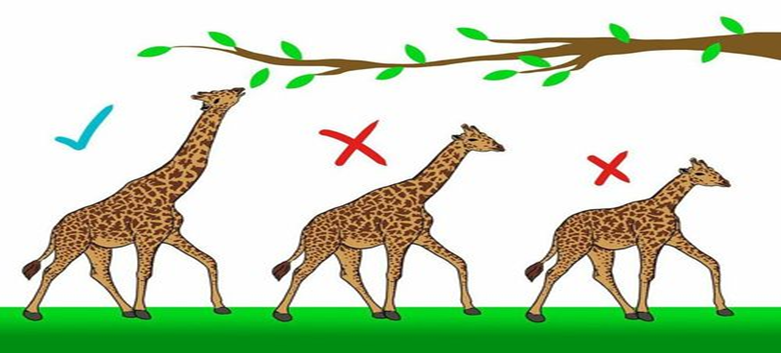Natural selection is a term that is used to refer to the evolution, over a certain period in the species, in which the genes are responsible for their survival, and adaption. The idea of natural selection was proposed by Charles Darwin, who is the main researcher behind the modern concepts of evolution. In natural selection, the genetic traits are shown by the populations, over the many generations, which helps them to adjust themselves according to the environment. These traits can be the physical, or the structural, such as the musculature, or the skeleton, which helps the organism to live according to the environmental conditions. Or they may be the physiological traits, such as the enzymes in the digestive tract, which helps for the breaking down of the food sources.
Examples of Natural Selection
- Physiological
Various species undergo certain changes over the period, which helps them to adapt to the changing environment. One of the important physiological change, that occurs in most of the human beings is their ability to digesting the cow milk. In the areas where there are no cattle, human beings are lactose intolerant. But in the areas where cattle are domesticated the human beings have the enzymes, for digestion of their milk.
- Skeletal Adaptations

Lizards, Giraffes, and various other species are adapted to the environment by the genetic changes to their skeleton. This form of natural selection means that if they will not do changes in their skeleton they will ultimately die. Some of the lizards, in specific regions, have longer leg bones which help them to climb up, during flooding and also help them to escape from the predators in the ground. The lizards who have shorter legs in those areas, usually don not survive longer and die as they are incapable of that environment.
- Coloration
Many species are known to have been adapted to the environment by causing the changes in their body coloration. Natural selection occurs, after the development of optimum coloration. The members of the species, which fail to adapt the coloration according to the environment have a reduced life span. As they die out quickly, so they do not reproduce abundantly. Some examples are the mouse, deer, peacock, and the peppered moth.
- Bacteria
Bacteria are the most common examples of natural selection. Some bacteria have adapted to use the food sources, that earlier was not useable. They are also adapted to deadly antibiotics.